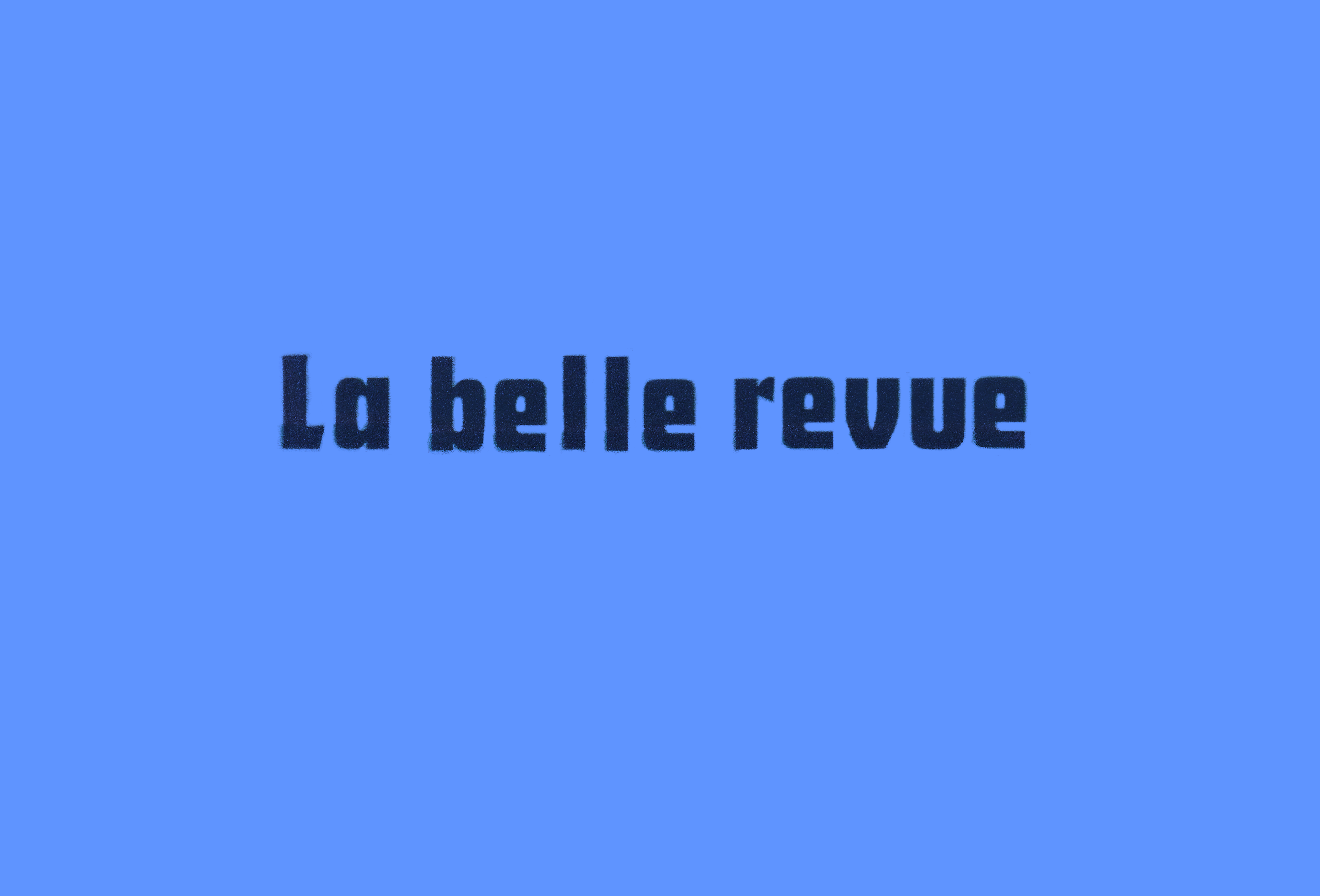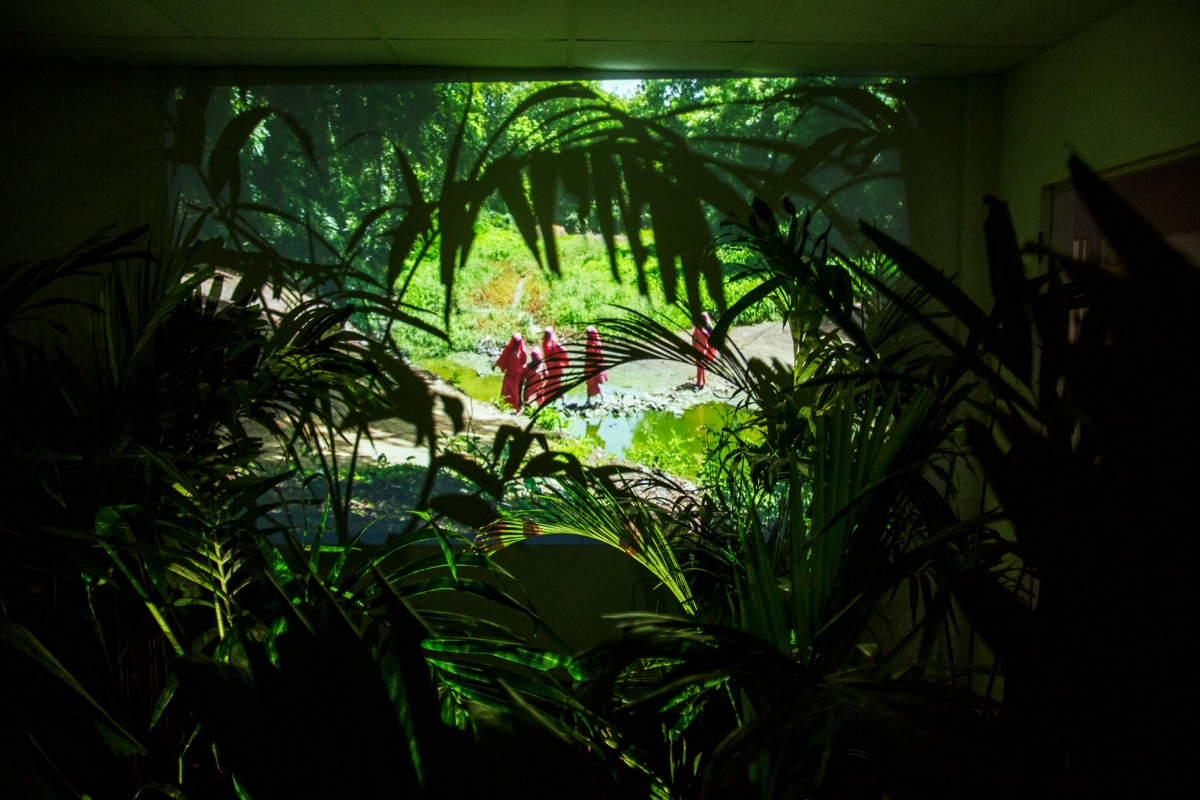After the “Global terroir” of La belle revue #8, dedicated to Cape Town, South Africa, we continue our investigation into the African continent with Nigeria’s largest city: Lagos. Thanks to our discussions with two figures from the French cultural milieu in Nigeria, Christelle Folly, cultural attaché at the French Embassy in Abuja, and Maurice Chapot, coordinator of cultural activities at the Alliance Française in Lagos, we enjoyed local guidance in creating this report, which will be printed and distributed in English in Lagos in November 2021. We called on three connoisseurs of the Lagotian scene, who are heavily engaged and actively contributing to its international resonance: Iheanyi Onwuegbucha, an art critic, exhibition curator, and former director of the Lagos Contemporary Art Centre; Roli O’tsemaye, an art critic, curator, and contributor to TSA Art Magazine; and Ayodeji Rotinwa, essayist, art critic, and deputy editor-in-chief on the news platform African Arguments. Their testimonies reveal the urban fervour, the presence of many communities of artists, and the recent multiplication of locations and art projects that make Lagos fertile ground for creation in all its forms.
Iheanyi Onwuegbucha’s text presents the heterogeneity of the art spaces and dynamism of the stakeholders behind these initiatives. With over twenty million residents, Lagos manifests huge social disparities, one of the causes of which can be found in its oil exportation, on which Nigeria’s economy is based. A private sector with significant financial resources ready to invest in art and culture has therefore alleviated the almost complete absence of public funding. While the system, which the author describes as ‘mainstream’, focuses on the activities of a few galleries and some of the more established institutions (such as the African Artists’ Foundation, the Centre for Contemporary Art, the Lagos Photo Festival, or more recently, the Lagos Biennale), the alternative milieu has been experiencing a boom over the last five years thanks to artist-led initiatives (such as the Museum of Contemporary Art, Lagos, the Junkyard Museum of Awkward Things, or the Treehouse, respectively founded by Uchay Joel Chima, Thejunkmanfromafrika Dilomprizulike, and Wura-Natasha Ogunji) animating ‘underground’ experimentation and symbolising the commercial success of these artists, which has enabled them to fund these venues.
Roli O’tsemaye describes Lagos through a series of artworks considering the effervescence of the city, its social and economic issues, and more broadly, Nigeria’s recent past. The bright and lively colours of Lagos are stripped by Logo Oluwamuyiwa, who, with his series of black-and-white photographs, Monochrome Lagos (2013– ), show this megalopolis from new perspectives, highlighting some of the individuals and places that would otherwise go unnoticed. The series Lagos Soundscape (2008– ), by the artist Emeka Ogboh, focus on the auditory specificities of this city in constant motion, in which sound becomes the expression of the hyper-capitalist system in force. British artist Polly Alakija, living in Nigeria since 1989, created a mural for the pillars of Falomo Bridge, choosing to pay homage to the 276 young women kidnapped in 2014, so that its population would not forget this tragic episode. Finally, the exhibition Power Show I (Omenka Gallery, 2018), by Ayọ̀ Akínwándé, highlights one of the major contradictions of Lagos and of Nigeria, a country rich in natural resources, yet experiencing a systemic lack of fuel and electricity.
Ayodeji Rotinwa’s article concentrates on the resurgence of black portraiture depicting subjects from everyday life. This pictorial genre, already present in Nigerian art history, has gained in importance among young painters such as Chiderah Bosah, Tosin Kalejaye, Collins Obijiaku, Marcellina Akpojotor, or David Otaru, and has also recently aroused the interest of local and international institutions and the art market, giving rise to several thematic exhibitions, such as Liminality in Infinite Space, at the African Artist Foundation, Lagos, in 2020. The artists of this generation, often self-taught, who use the internet and social networks as a framework for training and as a global yardstick, create paintings of their friends and families, or of people they meet in the street, perceiving the representation of everyday life as a tool for political expression and a means of identification.




